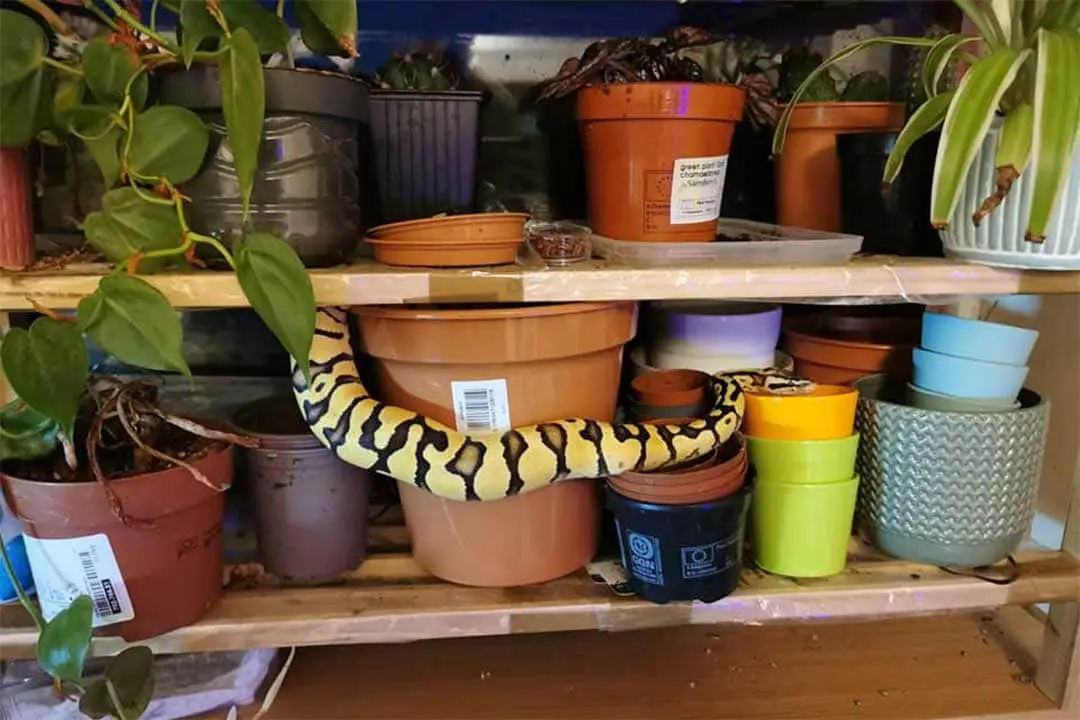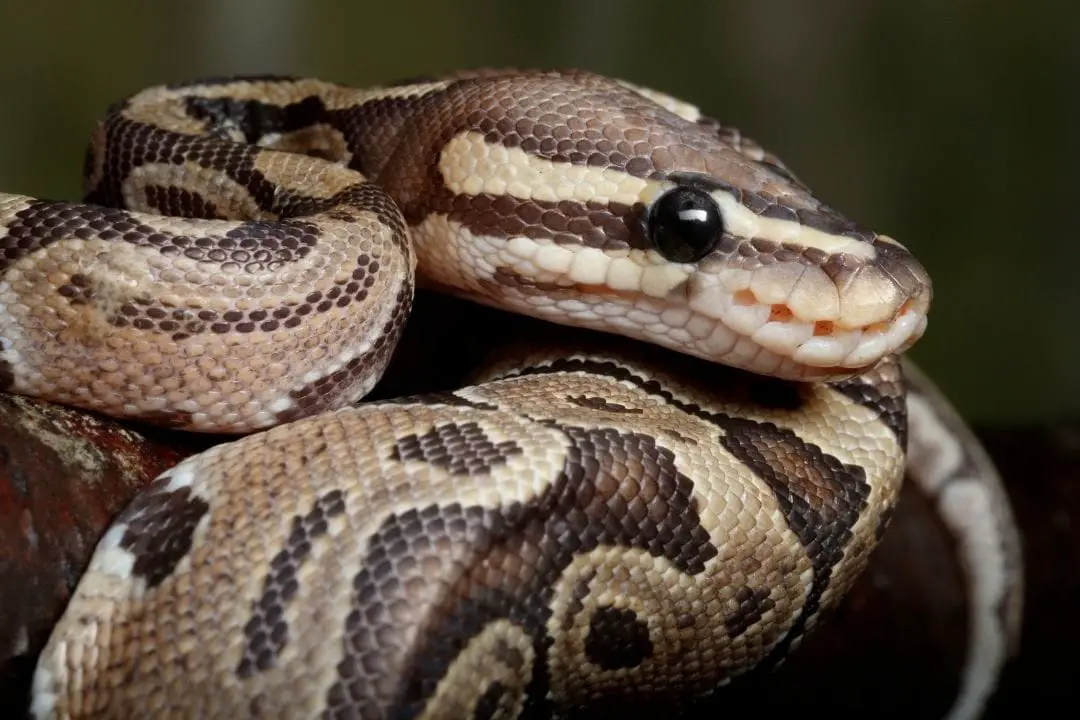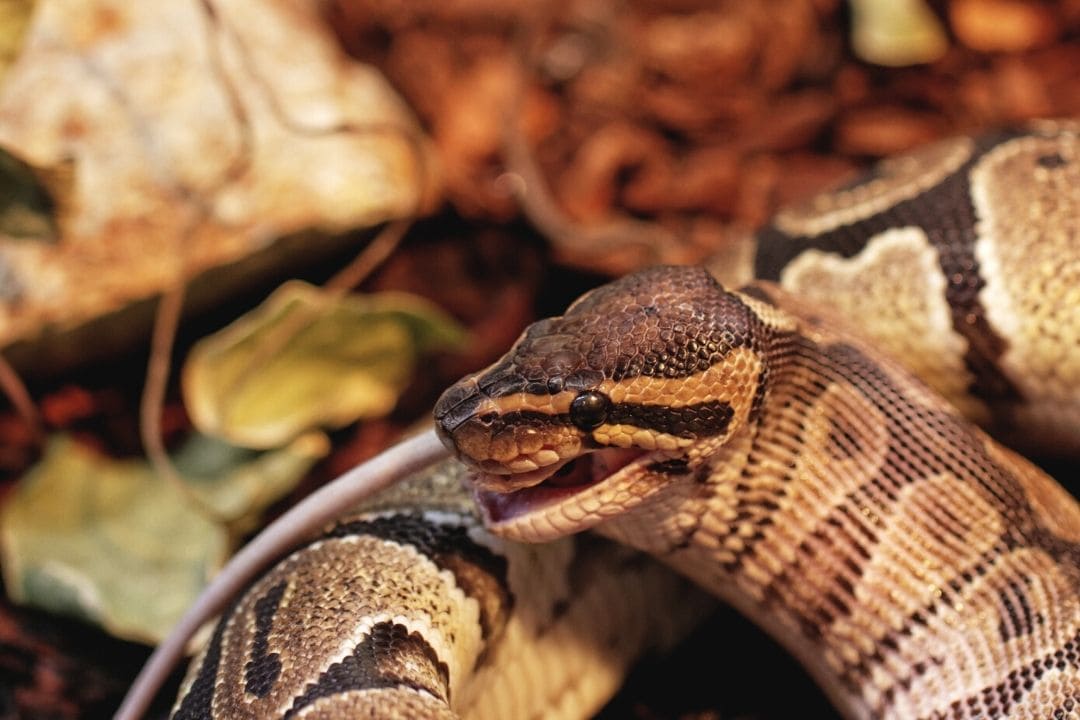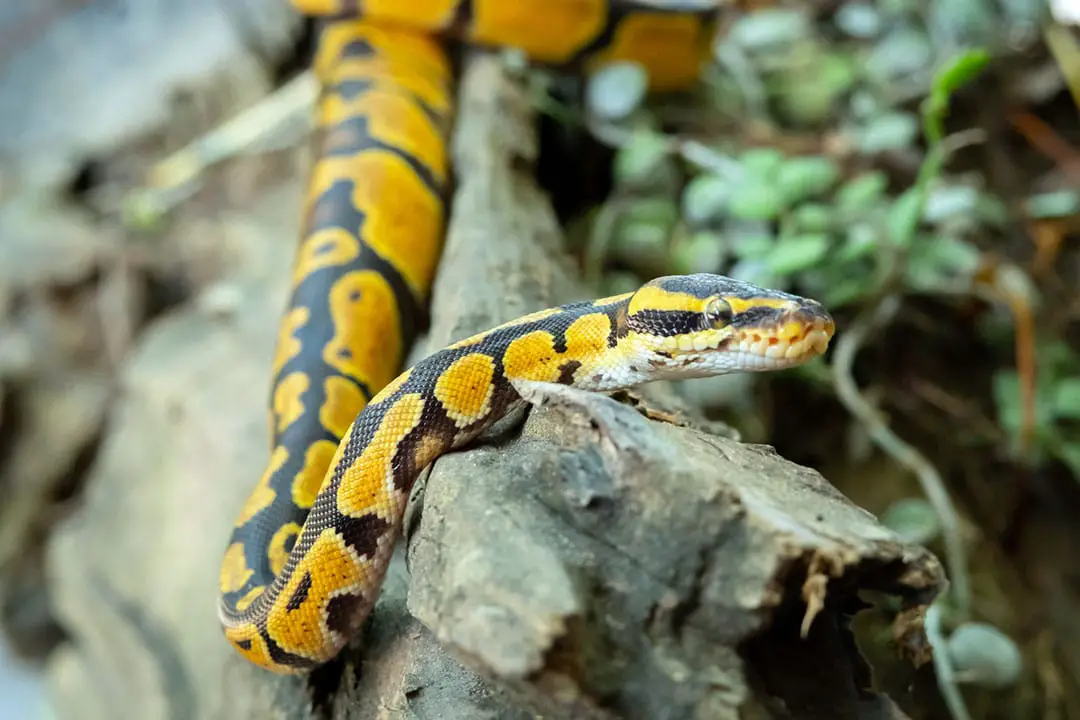Ball pythons or royal pythons (Python regius) are known escape artists.
They are strong and very good at getting into tight spaces. If your snake has escaped, there are some steps you can take to help you find your pet.
Here is how to find an escaped ball python.
In general, you will find your ball python in dark and tight areas where they will most likely hide. They prefer warm areas and will avoid light and open areas. If your snake is missing, the first place to look is behind furniture and in containers like shoeboxes.
Stay Calm
Keeping calm will help make sure you approach the search for your snake logically. If you make a lot of noise or rush around, your snake may retreat to find a more secure location.
Keeping calm will make sure your snake doesn’t sneak out behind you. Make sure you take a quick look around your home to make sure doors and windows aren’t open.
You should also check the enclosure to make certain your snake isn’t hiding under the water bowl or the substrate. Finding a snake that has gotten outside will be much harder.
You will likely need to enlist help from your neighbors to locate your snake. If you have any other pets, make sure they are secured away from where your snake might be. Many other pets can hurt a snake.
Start Your Search
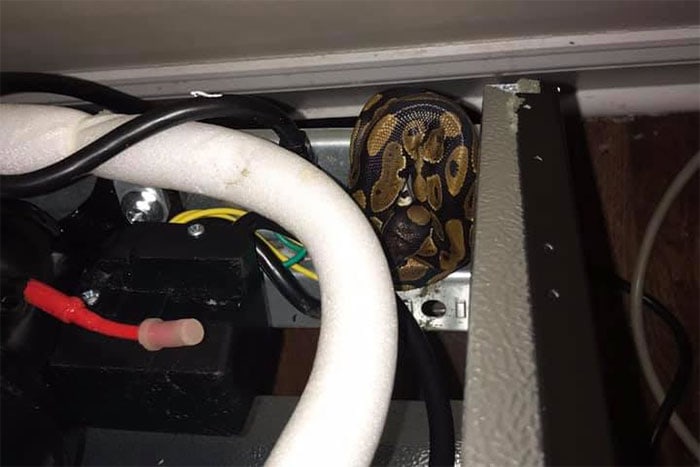
You should start by securing the room you last saw your snake in. Shove a towel under the door and cover any cracks or vents. Next, get close to the ground and start looking for areas that are dark and tight.
Snakes love hiding, so it will probably be in someplace it can feel secure. Carefully move furniture and look in anything your snake could access. While they aren’t the best climbers, they can get in more places than you would think.
Check everywhere in a room before crossing it off the list and moving to the next room.
Be sure to close the door and stuff a towel under the door so you know your snake won’t be able to sneak back into a cleared room.
Move outwards from where you last saw your snake. Most ball pythons don’t go very far. You are likely to find the snake within 10 feet of where it escaped from.
Check low first, and look higher. Check everything, even if you think your snake is too large to fit. Be sure you check inside soft furniture and in your couch. Snakes love tight spaces.
They also love warm areas, so check near and behind anything that produces heat.
If you are unable to locate your snake quickly, you can use methods to help track where your snake might be. Ball pythons are most active at night, so you can either look at night or set up a few traps to help you locate your snake.
Traps
These traps are not about restraining the snake. They are to help you know where your snake might be. You can lay down floor or cornstarch on hard flooring.
This will let you see tracks and help you narrow down where your snake might be. You can use lines of pennies across the floor and set on furniture to help you locate the snake. Not only will a line be interrupted by your snake’s movements, but you might hear the pennies falling if the snake knocks them over. This might help you catch them.
Another option is called a warm trap. You should lower your house’s temperature to around 68 degrees.
Next, leave a few open cardboard boxes with a reptile shipping warmer pack inside. You leave these on the floor and your snake should go to these to try to warm up.
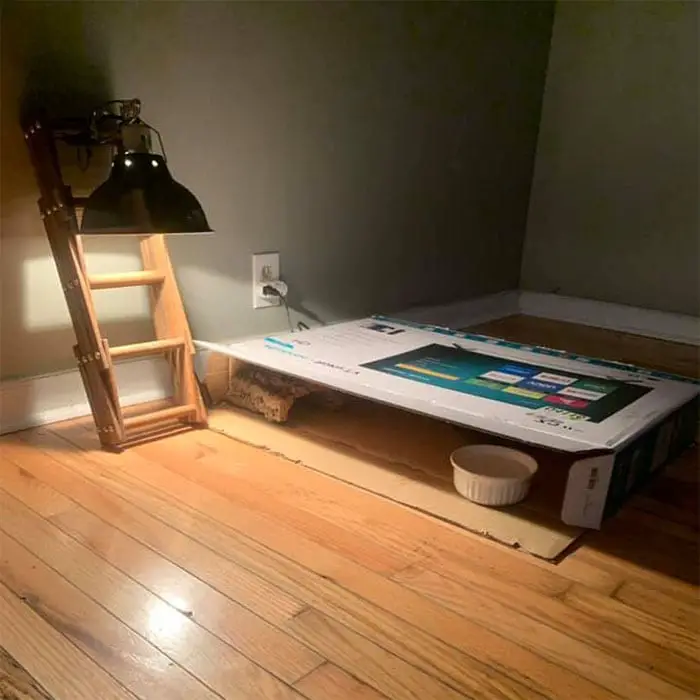
You should also leave the enclosure open with all the heating on. If it is high up, be sure to place it on the floor. Your snake may prefer to head home where it will be more comfortable.
Standard room temperature is a bit cold for reptiles, so your snake will look for heat. A container with an opening that your snake can just manage with a thawed frozen mouse or rat could help. This works by making it so your snake can’t escape once it eats the food. Make sure that you add some air holes and that it will barely fit the snake. A crayfish trap can also be modified to work as a snake trap. This should help you find your snake.
If Your Ball Python Escaped Outside
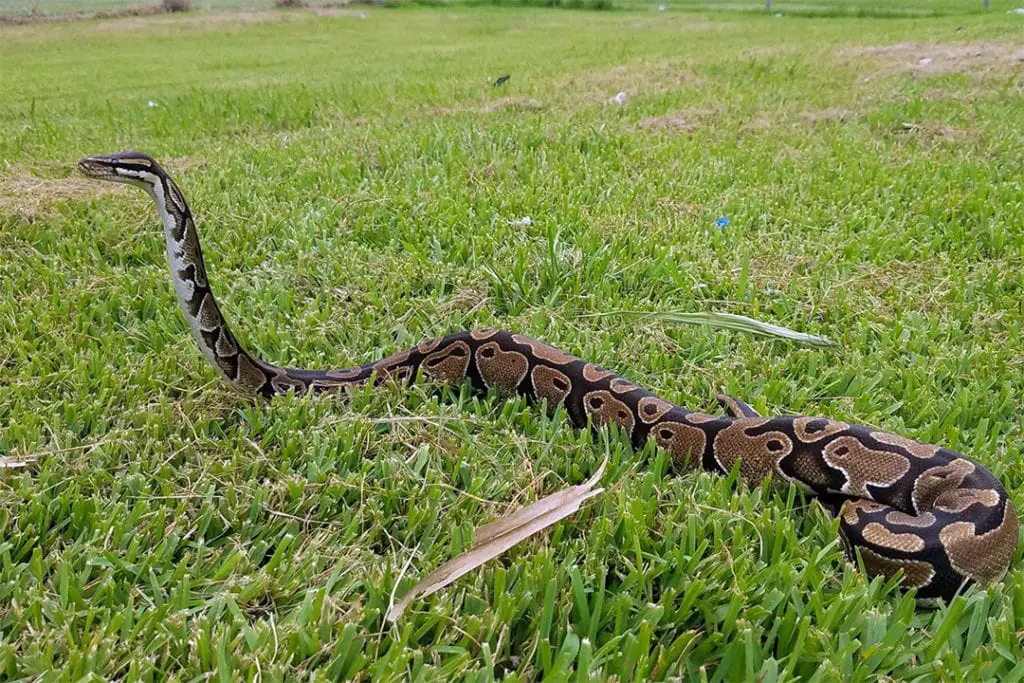
If your snake is outside, you will need to alert neighbors. Be sure to explain that your snake is harmless and show them a picture so they know what it looks like.
Your snake will likely head for warm areas and areas with rodent populations. If it is warm, the snake may climb a tree at night or be found in bushes or burrows like they do in the wild.
If it is colder, the snake will seek out heat. Leaving out a warm hide or electric blanket can help. You can also try a food trap to hopefully catch your snake.
You might catch a wild snake though. A snake that is outside is much harder to fund. Try to look at night.
Conclusion
Losing your snake is a scary experience. You will likely find your pet much closer than you would think. Check near the enclosure or where the snake went missing from.
It likely didn’t go very far.
Have you had to look for a lost snake? Please leave your tips for finding a snake below. If you have any other thoughts or questions, please leave a comment.
Everything you need to know about caring for Ball Pythons in captivity:
Read our Ball Python Care Sheet (Complete Setup & Guide)
